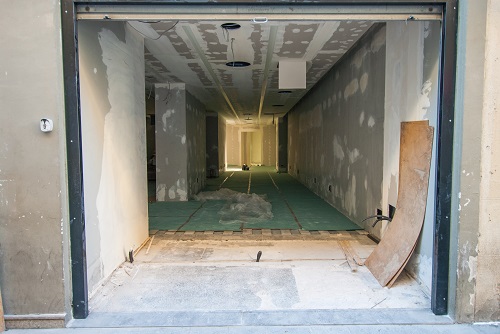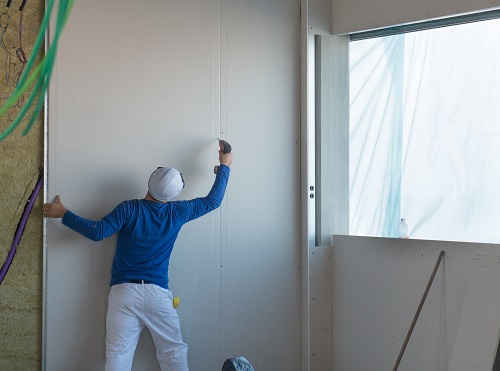The dry lining industry is an interesting one thanks to the many skills and techniques there are to learn, as well as the different career paths you can take if you particularly like a certain element of the industry.
If you’re thinking of becoming a dry liner, there are some great benefits to doing the work, including the satisfaction of seeing new building plans come to fruition and the opportunity to create new spaces, by dividing larger areas into smaller rooms and walkways.

The job is a valuable one within the construction industry, as a certain level of skill is required and it can be fundamental to a project’s completion.
What does a dry liner do?
The general work of a plasterer involves applying all kinds of plaster to walls and ceilings to get them up to scratch for decorating purposes. You could find yourself working in solid plastering, fibrous plastering or dry lining. If dry lining is a fairly new concept to you and you’re wondering what does a dry liner do, then, when you find yourself in a newly built house, just knock on some of the internal walls and you’ll find a good example of what they do.
It’s the dry liner’s job to put up internal walls in commercial properties of all kinds and domestic dwellings, using metal stud partitioning and plasterboard panels. They can also create space for insulation, install removable wall partitions, suspended ceilings and raised flooring and hide visible pipes and wiring.
There are two stages of drylining – fixing and finishing. You’ll need to be able to measure out and cut plasterboard to the right size and there’s also an element of sealing and taping the joints, once the plasterboard is in place, then sanding down the area ready for painting and decorating.

Useful information on drylining courses
In a similar way to other plastering jobs, some of the skills you will need to carry out this practical job are good numeracy skills, the ability to work as a team, a decent level of fitness (because of the lifting and moving of the panels) and the ability to read technical diagrams. But, when it comes to learning how to do it, you can become a dryliner’s mate and figure it out on the job, take a college course to learn the skills, or do both.
While there are no set qualifications needed to become a dryliner, there is a range of college courses and apprenticeships that you can find and do through organisations such as the CITB and National Careers Service, City and Guilds which should help you learn the skills you might need.
If you’re going in the trade get the right kit!
And, if learning about drylining and becoming a dry liner sounds like an appealing prospect to you, then you also might want to give yourself the best possible start by getting set up with a good piece of kit.
At Gypsumtools we stock a range of professional drylining tools and taping kits which will help make things a little easier while you learn the trade.
You can take a browse through our products online, or give us a call to find out more.
